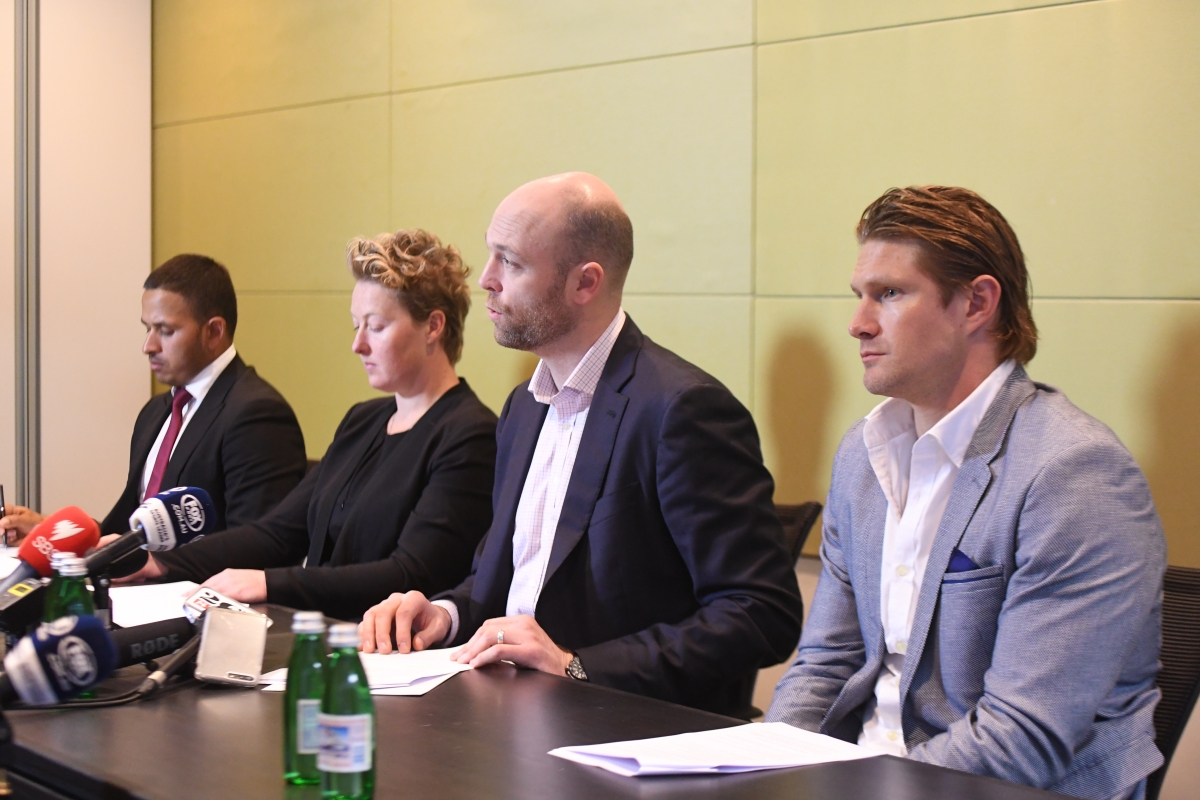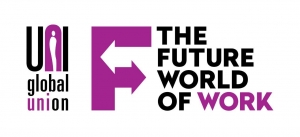Players unite to ensure a fair share and gender equity in cricket

A Q&A with Australian Cricketers' Association leader Alistair Nicholson
On 8 September 2017, the Australian Cricketers made history. In the name of 300 players – male and female - Alistair Nicholson, CEO of the Australian Cricketers Association (ACA), signed a new Memorandum of Understanding (MOU) with the game’s governing body Cricket Australia (CA) covering male and female players alike. This integrated agreement is a first for Australian cricket.
The five-year deal maintains the successful revenue-sharing model established by players and management to the benefit of Australian cricket over the last 20 years. Aside from fair remuneration increases and greater input on scheduling and grassroot investment, the MOU includes a gender equity-pay model resulting in the biggest pay rise in the history of Australian women’s sport.
The agreement was preceded by 10 months of fierce negotiations, a challenging time for the players and their union. Cricket Australia repeatedly attempted divide the players by bypassing the ACA and contacting them directly. The players, however, remained united every step of the way, even after the previous MOU expired rendering some 230 of them unemployed at the end of June. They relied on their strength as a collective and the foresight of their union.
The ACA had set up a fund to support unemployed players in financial need. Further, it had created “The Cricketers Brand” to own the intellectual property rights of ACA members and allow for their commercial exploitation. In the face of the players’ resolve Cricket Australia finally agreed to the ACA’s demands in early August.
“The World Players Association congratulates the Australian Cricketers’ Association and its members on the principled and united manner in which they stood together for the players and the game. Their work is an example for players around the world. Players everywhere increasingly understand that developing a genuine and fairly paid career path for elite women players depends on organising and collective bargaining”, said Brendan Schwab, Executive Director of World Players.
“This negotiation also involved protecting a long standing right – the right to share fairly in the wealth that players have helped create. Today’s players demonstrated a deep appreciation of the work of previous generations to build today’s opportunities. They were clear in their determination to leave a similar legacy for the players to come.
“The rights to gender equality, a fair share and organise and collectively bargain are all internationally recognised human and labour rights. The work of the ACA and its members shows just how much stronger a sport can be when these rights are respected and upheld for players. The same must also be true for sport at the global level.”
In the middle of the dispute stood Alistair Nicholson, a former Australian rules footballer, who has led the ACA since 2014. In his first industrial dispute Nicholson led the players in a calm yet decisive manner. “His leadership skills have been incredible to watch in such testing times”, said ACA executive committee member and leading Australian international cricketer Shane Watson after the settlement. Nicholson recently took time to reflect for World Players on the negotiations and the lessons he has drawn from them.

Q. The negotiations with Cricket Australia started in November 2016. At what point did you realize that it would come to a grave dispute?
A. We were very open from the beginning of negotiations about what our key principles would be heading into the negotiation phase. There was strong opposition from an early stage, from when we presented our initial submission to CA towards Revenue Sharing. We knew that this was going to be a sticking point, but we were confident that it was the right model for Australian cricket.
Q. Please describe your modes and frequency of communication with the players during the negotiations?
A. We spoke frequently with the players via a number of methods throughout the negotiation. We had various face to face visits, were in constant dialogue with state delegates, communicated directly with players via text message, video and email.
Q. Despite being approached by CA directly and facing intense pressures the players remained united. What are the key elements that have helped to forge this unity among the players?
A. We always aim to represent the views of the collective, and we were able to achieve this through a fantastic group of players who were interested in the gain of the collective, not the individual. Being directly informed by the ACA, with the correct information, was vital for our players. This allowed them to stay united on the important issues of Revenue Sharing and the inclusion of female cricketers into the MOU for the first time.
Q. And how did they respond when being approached by CA directly?
A. The players asked not to be contacted directly by CA on a number of occasions, so naturally it did not please them when this occurred. However, the longer the dispute wore on, the more galvanised the group became.
Q. Please describe the importance of establishing the support fund in this context?
A. The ACA exists to support the players. So naturally when several of our players required assistance due to the MOU impasse, we acted to support those players. It certainly was able to provide some comfort to players who were anxious regarding the situation, and that helped galvanise the group.
Q. Similarly, how important was setting up “The Cricketers Brand” as a way to explore revenue opportunities for the players?
A. Again, "The Cricketers Brand" (TCB) was borne out of necessity due to 230 players being out of contract. The players IP is extremely valuable, and TCB allowed us to explore commercial opportunities for players while they were off-contract. Setting it up was one of the many cogs that went into ensuring the players were supported through the impasse.
Q. These were your first MOU negotiations as CEO of the ACA. What are the lessons you have drawn from a leadership standpoint?
A. It was important to have good support from our Executive and the key players around our key positions. This was established early on in the process and so was able to be maintained at crucial times in the negotiation. It showed that this was done well. Good communication to a range of stakeholders was another important factor. This was time-consuming but it was really important to have everyone up-to-date. Finally, making sure you still are leading the organization and business-as-usual tasks while heading up the negotiation. Both are big tasks but this focus maintains some normality and important for maintaining stability for staff who you see everyday.
Q. Under the umbrella of World Players’ affiliate the Australian Athletes Alliance (AAA) you have recently met with the leadership of the Rugby League Players’ Association (RLPA) and the Australian Football League Players’ Association (AFLPA) to discuss the outcome of your dispute. How important is the exchange with representatives from other sports and the solidarity across the board?
A. The AAA is a growing body which is starting to have influence in the professional sporting landscape in Australia. While no sport is exactly the same, it is really important that members of the AAA communicate with each other on fundamental issues such as Industrial Agreements, Health, Safety, Female Sport, Player IP and many others. The AFLPA achieved a fantastic result, getting a share of Australian Rules Football revenue for the first time, and we know that the RLPA is after a similar mechanism. It is vital that all Players Associations work together to achieve common outcomes.

